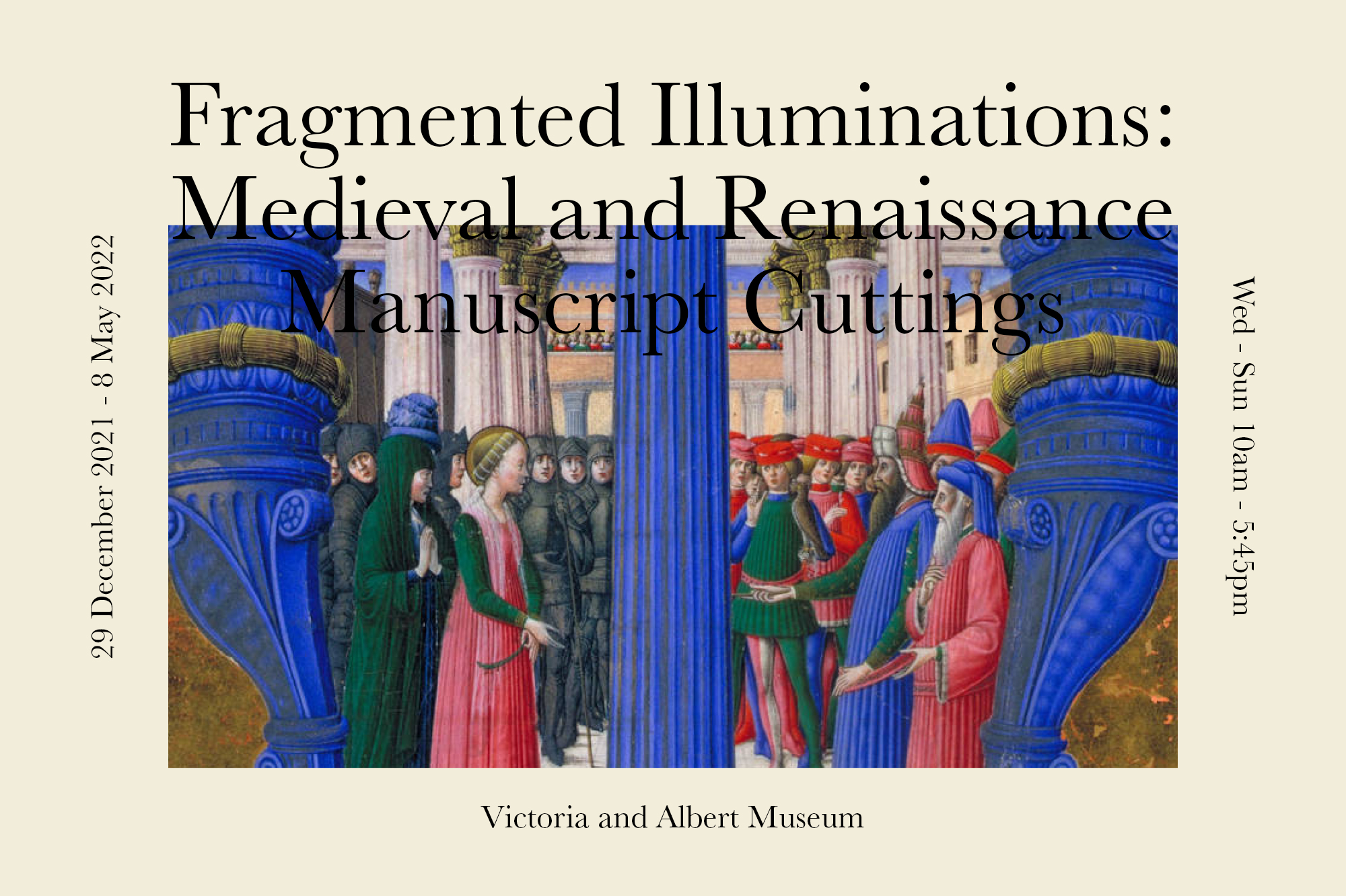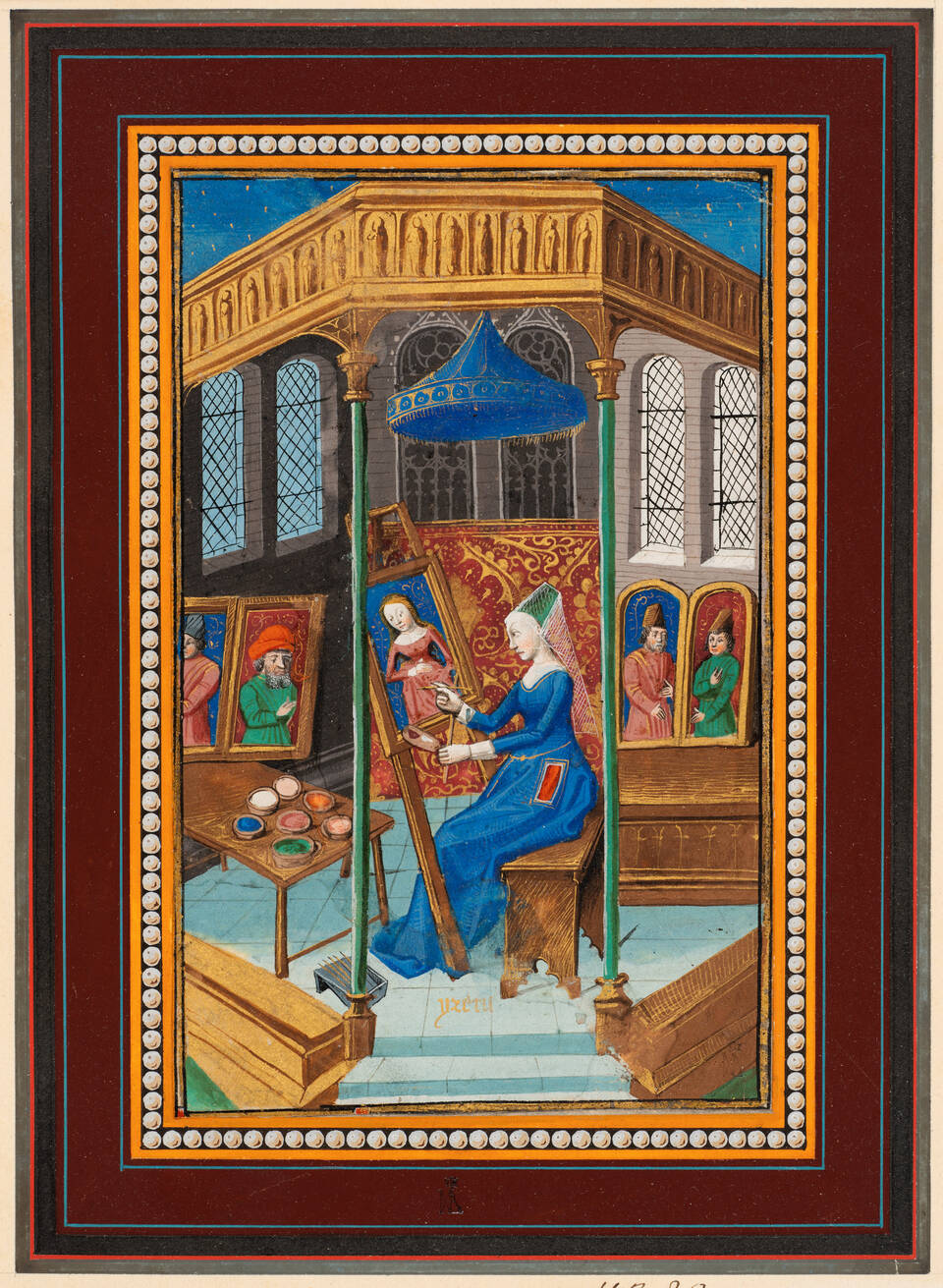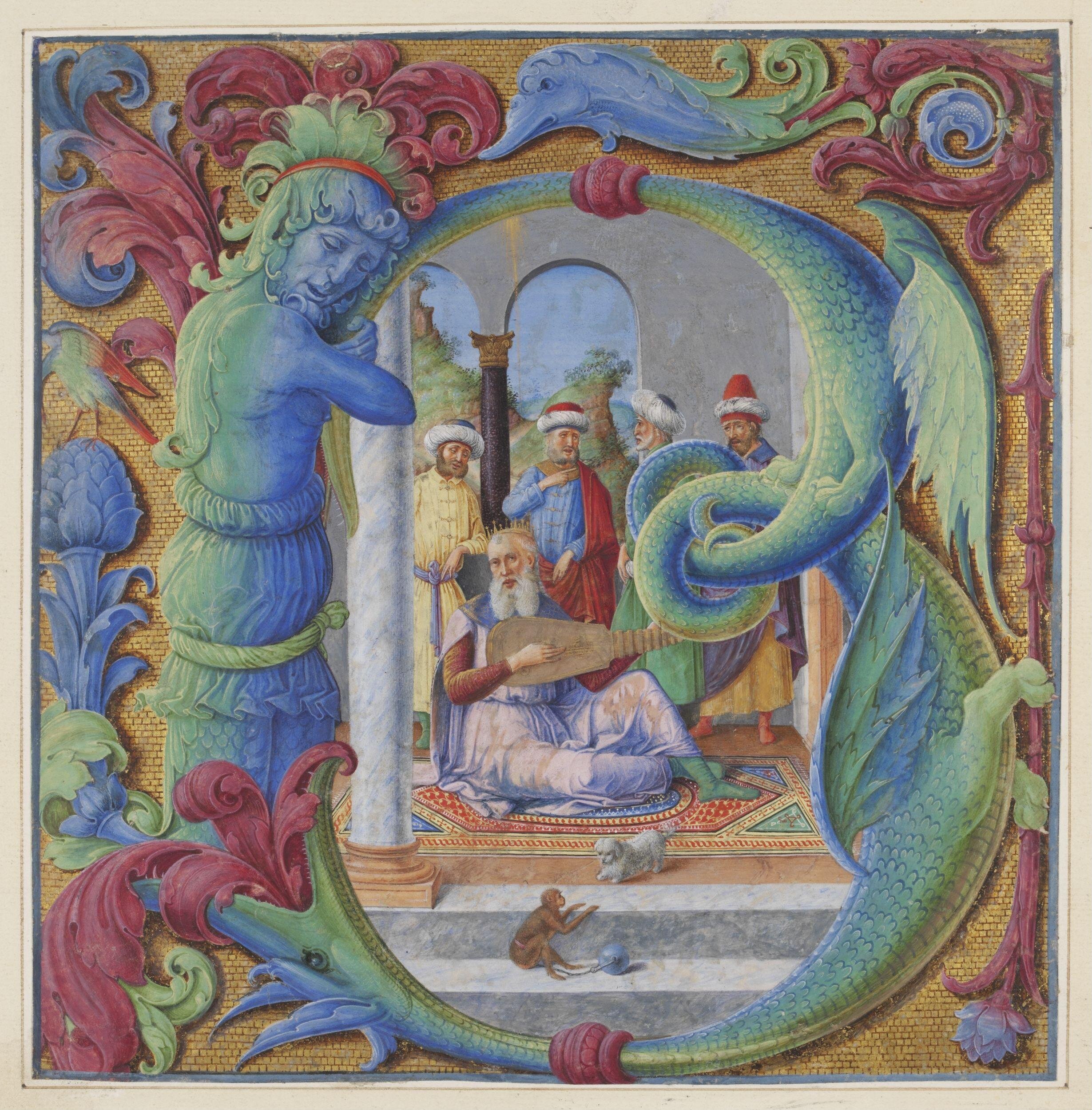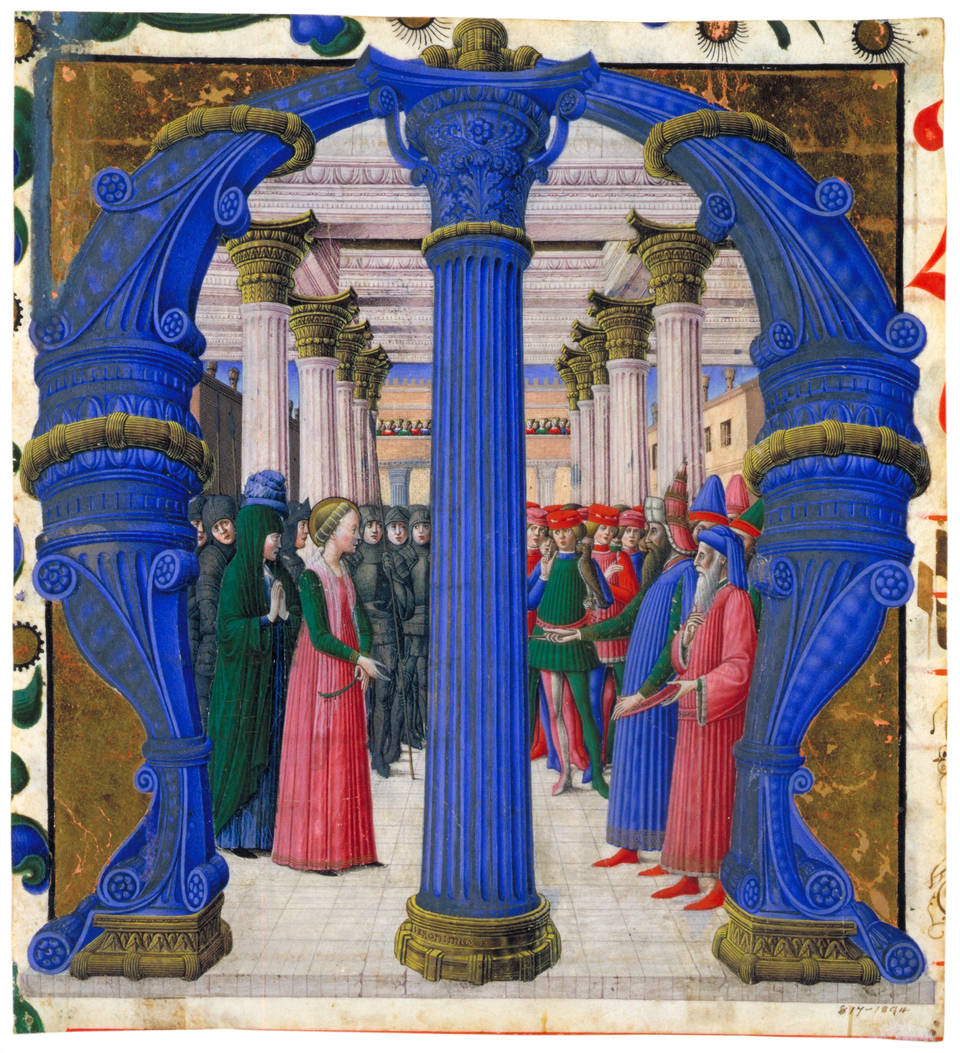
Fragmented Illuminations: Medieval and Renaissance Manuscript Cuttings
Featuring highlights from the museum's collection of over 2,000 cuttings from medievalmedieval and RenaissanceRenaissance manuscripts, this display explores the types of books these pieces came from and the 19th-century context in which they were cut up and collected.

Fragmented Illuminations: Medieval and Renaissance Manuscript Cuttings at the V&A
29 December 2021 - 8 May 2022
Article by V&A Museum
he secularisation of Catholic Church property that swept Europe in the late 18th and early 19th century brought numerous medieval and Renaissance books from cathedral treasuries and monastic libraries into private hands.
From the mid-1820s, a market developed for miniatures, pages, initials and border decorations cut out of illuminated manuscripts, especially large volumes that had been used for daily worship and celebrations in church. While their text was outdated or no longer understood, their pictorial and decorative elements were increasingly recognised as of antiquarian interest and relevant to the history of painting.
From its foundation in 1852, the V&A acquired specimens of illumination, sometimes as artworks in their own right, but more often to serve as models and inspiration for British art workers. With over 2,000 manuscript cuttings, mainly purchased before 1900, the V&A now holds one of the largest collections of this kind in the world.
Featuring cuttings dating from the 12th to the 16th century and originating from Italy, the Netherlands, present-day Belgium, Germany and France, this display explores two key aspects: the 19th-century context in which these pieces were cut up, collected and even copied, and the types of books they came from and their original context of production.
The original context
In this section, the focus moves to the original context of the cuttings: what kinds of books did they come from? For whom were these books made and by whom?
Liturgical books, especially choirbooks are best represented in the collection, as many of them went under the knife. Choirbooks had to be large because whole choirs needed to sing from them in church. They were often beautifully decorated, so painted sections cut from their pages still had generous proportions and could be framed like small panel paintings.
The collection also includes leaves from bibles and biblical commentaries. Among the former, feature over80 leaves from a biblemade in Liège around 1300 for the house of the Teutonic Knights in Maastricht. In the 13th century, this powerful German military order had overseen the imposition of Christianity in present-day Poland and Lithuania.
Small cuttings from books of hours are also present in the collection, reflecting the popularity of this type of prayer book, especially in the 15th century. Books with a non-religious content are few, but of great interest. Providing a glimpse into the range of secular subjects covered by a medieval library, they include legal and medical texts, but also literary works. One of the major discoveries made during research for this display was to uncover a previously unpublished miniature missing from a manuscript of Boccacio'sDes cleres et nobles femmesnow in New York. Painted in vibrant colours, it shows the Greek artist Irene as a 15th-century painter in her studio.
Fragmented Illuminations: Medieval and Renaissance Manuscript Cuttings at the V&A
29 December 2021 - 8 May 2022
Victoria and Albert Museum
Cromwell Road, London, SW7 2RL
Wed - Sun 10am - 5:45pm
Ticket: Free
*Prints & Drawings, Rooms 88A-90, The Julie and Robert Breckman Gallery
For more information, please visit
www.vam.ac.uk



Sources & Credit:
© Victoria and Albert Museum, London
www.vam.ac.uk
1. https://www.vam.ac.uk/articles/about-the-fragmented-illuminations-display
2. https://www.youtube.com/watch?v=hfFacvSjqns
3. https://www.vam.ac.uk/exhibitions/fragmented-illuminations-medieval-and-renaissance-manuscript-cuttings-at-the-va
Photos:
1. Manuscript, Antiphonary, with the Sanctorale and the Common of Saints, Italy (Verona), dated 1492.
https://collections.vam.ac.uk/item/O1480846/antiphonary-manuscript-libri-girolamo-dai/
2. Initial ‘B’, showing St Michael and the dragon, from a choirbook, about 1350, Netherlands. Museum no. 4013.
https://collections.vam.ac.uk/item/O1012825/historiated-initial-from-a-choirbook-manuscript-cutting/
3. Pentecost, attributed to Silvestro dei Gherarducci, from a gradual made for the monastery of San Michele in Murano, 1392 – 99, Florence, Italy. Museum no. 3045.
https://collections.vam.ac.uk/item/O86182/leaf-from-a-gradual-for-manuscript-cutting-gherarducci-don-silvestro/
4. Decorated initial O from a manuscript, Flanders, early 16th century.
5. Irene, attributed to circle of François Le Barbier, from Giovanni Boccaccio, Des Cleres et nobles femmes, about 1460 – 70, Paris, France. Museum no. 4280.
6. Historiated initial B, with King David playing the lute, from a choir book, Verona, c. 1495-1505.
https://collections.vam.ac.uk/item/O89301/historiated-initial-with-king-david-manuscript-cutting-libri-girolamo-dai/
7. Historiated initial M, St Giustina disputing with Maximian, from an Antiphonary, signed "Ieronimus" (Girolamo da Cremona), Padua, c.1461 (before 1462).
https://collections.vam.ac.uk/item/O87243/historiated-initial-with-st-giustina-manuscript-cutting-da-cremona-girolamo/
8. Frontispiece to the Giltlingen Psalter made for the Abbey of Saints Ulrich and Afra, Augsburg, 1494-1495, with 19th-century overpainting.
https://collections.vam.ac.uk/item/O1068759/frontispiece-from-the-giltlingen-psalter-manuscript-cutting-beck-georg/










Leave a Reply
You must be logged in to post a comment.